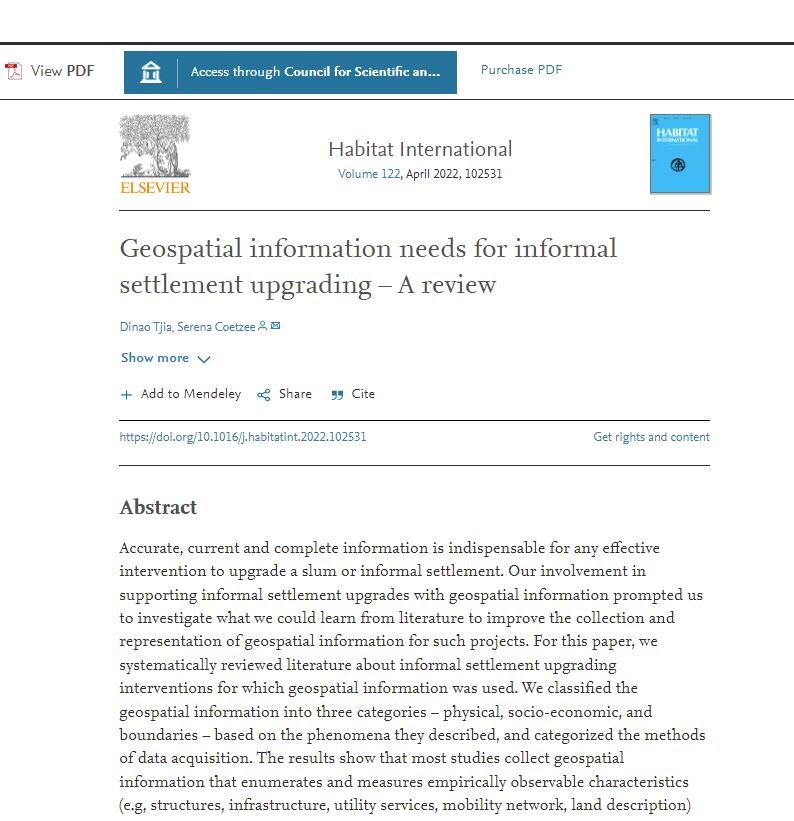Geospatial information needs for informal settlement upgrading
A review

Accurate, current, and complete information is indispensable for any effective intervention to upgrade a slum or informal settlement. The authors’ involvement in supporting informal settlement upgrades with geospatial information prompted them to investigate what they could learn from literature to improve the collection and representation of geospatial information for such projects.
For this paper, the authors systematically reviewed literature about informal settlement upgrading interventions for which geospatial information was used. They classified the geospatial information into three categories – physical, socio-economic, and boundaries – based on the phenomena they described and categorized the methods of data acquisition.
The results show that most studies collect geospatial information that enumerates and measures empirically observable characteristics (e.g, structures, infrastructure, utility services, mobility network, land description) and characteristics of occupants of informal settlements (e.g., socio-economic status). Fewer studies collected geospatial information about social networks and social ties.
Data collection methods ranged from primary sources such as paper-based surveys, handheld/mobile GPS devices, vehicle-mounted cameras, etc., to secondary sources such as spaceborne, airborne, and web-based platforms. A few studies made use of unmanned aerial vehicles (UAVs), despite their recent popularity as a source of base maps, but we expect this to change in the near future.
The results can be used to inform data collection strategies for informal settlement upgrades. Policy makers and other stakeholders involved in informal settlement upgrades can benefit from a single source of knowledge about such information.
Abstract based on original source.


Comments